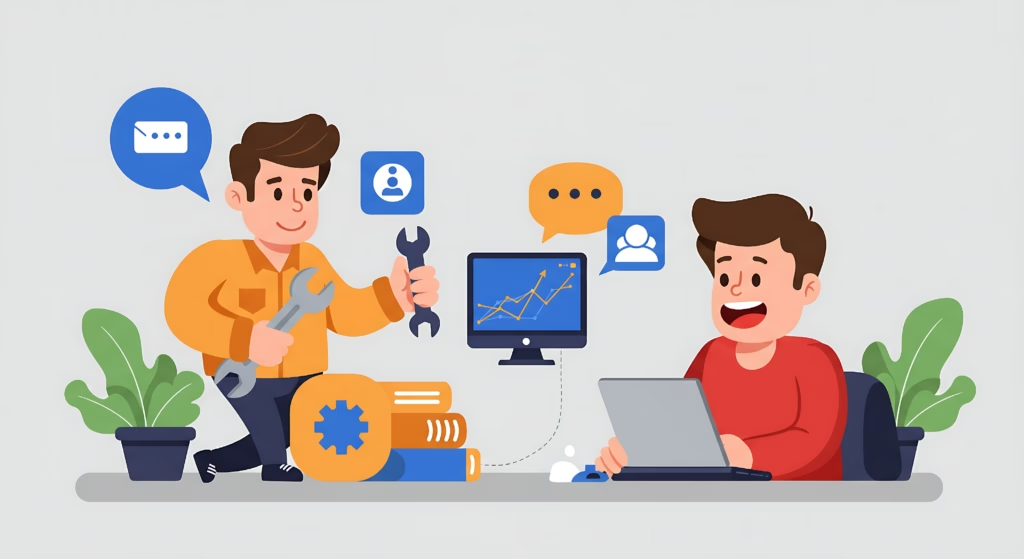Don’t Let Your Business Communications Go Down With The Ship: Disaster Recovery for Unified Communications
When disaster strikes—whether it’s a power outage, cyberattack, or the office printer finally achieving sentience—your business communications can’t afford to go dark. Phone lines are often the first connection your customers and employees reach for in a crisis. If they don’t go through, you risk lost revenue, damaged reputation, and customers who will definitely remember that time they couldn’t reach you during their own personal emergency.
Businesses traditionally relied on on-premises PBX systems that felt comfortably “in your control.” But let’s be honest about what that really meant:
- Power goes out? Phones die.
- Flood in the server room? Phones die.
- Carrier outage? You guessed it—phones die.
Communication during crises isn’t optional—it’s the lifeline that keeps your business afloat while everything else is sinking. And yet, despite understanding this critical need, many companies still don’t implement robust disaster recovery plans. Even when they do, these plans often collect dust, untested and outdated, like that emergency preparedness kit you bought five years ago that consists entirely of expired granola bars.
The Real Threats to Your Business Communications
Forget zombies and alien invasions. The real threats to your communications infrastructure are much more mundane but equally devastating:
- Power Outages – Local events that instantly knock your on-premises systems offline faster than you can say “where are the flashlights?”
- Carrier Outages – When your single PRI or SIP trunk decides to take an unscheduled vacation, your phones follow suit.
- Hardware Failures – Legacy PBX servers age about as gracefully as that milk you forgot in the office fridge over a long weekend.
- Cybersecurity Attacks – DDoS, toll fraud, or ransomware attacks that can cripple communications and leave you negotiating with criminals who only accept Bitcoin.
- Natural Disasters – Flooding, fires, storms—all take down on-site hardware with surprising efficiency.
- Human Error – Because sometimes the biggest threat to your system is Bob from sales who thought unplugging “that unused server thing” would free up an outlet for his new space heater.
Disaster Recovery Options for UCaaS: Not All Heroes Wear Capes
Cloud-based Unified Communications as a Service (UCaaS) transforms how businesses approach disaster recovery. Instead of a single physical box that can fail in spectacular ways, your system operates from redundant, geographically dispersed data centers. It’s like having multiple backups of your vacation photos—except instead of preserving memories of your hot dog leg pics, you’re preserving your entire business operation.
Several types of disaster recovery strategies exist for UCaaS:
- Redundant Data Centers – Your UCaaS instance runs in multiple geographic locations so if one fails, traffic automatically reroutes. It’s like having multiple offices without the additional expense.
- Failover & Auto-Rerouting – Calls instantly redirect to backup carriers, alternate locations, or employee mobile apps. Because nothing says “we’ve got this under control” like seamlessly transferring a customer call while your office is literally underwater.
- Cloud Backup & Restore – Regular backups of configurations, call flows, and voicemails ensure your system can be restored quickly. Think of it as a time machine for your communications—minus the paradoxes.
- Hybrid Failover – Some businesses implement a hybrid approach with limited on-premises backup lines (analog failover or cellular gateways) for that extra peace of mind.
Building an Effective UCaaS Disaster Recovery Plan
Creating a disaster recovery plan isn’t just about buying technology—it’s about building processes that ensure business continuity when things go sideways. Here’s how businesses should approach DR/BC planning for their communications:
- Risk Assessment – Identify potential threats specific to your business and location. Are you in a flood zone? Near a fault line? In a region prone to hurricanes or crippling snow storms? How often do you lose power?
- Identify Critical Call Flows – Which numbers and routes can your business absolutely not survive without? (Main line, support queues, sales lines).
- Recovery Objectives – Define your RTO (Recovery Time Objective) and RPO (Recovery Point Objective)—basically, how long can you be down and how much data can you afford to lose? Hint: The correct answer is usually “not much.”
- Map Redundancy Points – How will calls failover during an outage? (Secondary carriers, mobile apps, auto-forwarding to remote staff, moving people to work from home).
- Test Scenarios Regularly – Schedule quarterly failover drills and actually run them. With hosted UCaaS, the technology will work—the real question is whether your employees know how to use it. If your DR plan involves everyone switching to mobile apps, do they have them installed? Can they log in? Do they know how to transfer calls? Don’t be the company whose brilliant failover plan falls apart because nobody remembered their passwords.
- Empower Remote Work – Ensure employees can pick up communications from any location, on any device. Because sometimes the best disaster recovery strategy is just working from your couch.
A Cautionary Tale With a Happy Ending
Consider this real-world example: A Midwest financial institution faced a major ice storm that knocked out power to their main branch for two days.
With their old on-premises PBX, this would have meant zero calls, zero access, and customers who suddenly remembered they could just use that other bank down the street.
But with a cloud UCaaS solution:
- Employees answered calls through mobile apps from home
- IVRs rerouted traffic to unaffected branches
- Customers never realized the branch was dark
- The bank continued operations without missing a beat
The Bottom-Line Business Case
Some executives view disaster recovery as an unnecessary expense—like buying insurance for your insurance. But consider this math:
- Average cost of one hour of business downtime: $100,000–$300,000 (according to Gartner)
- Average UCaaS monthly per-seat cost: less than the price of a desk phone
In other words: preventing just one outage pays for years of business continuity. That’s not just good planning—it’s good business.
Techmode: The Disaster Recovery Dream Team
Techmode’s AWS-hosted UCaaS solution was designed with disaster recovery baked in from the ground up, not tacked on as an afterthought. With private instances hosted in triple-redundant AWS environments, each customer enjoys their own dedicated environment without competing with others for resources during crises. This architecture guarantees 99.999% uptime—less than six minutes of downtime per year—compared to traditional systems where outages are measured in hours or days. Even in the unthinkable scenario where the cloud itself vanishes in some catastrophic event, Techmode’s flexible architecture allows the entire phone system to be rapidly redeployed on-premises with minimal disruption—because sometimes having a Plan Z is just as important as Plans A through Y.
Coupled with Techmode’s concierge-level installation process and U.S.-based support, businesses don’t just get technology—they get a partner who ensures communications continue flowing no matter what disasters unfold. From customized admin training to dedicated day-one support with project managers and live technicians, the team ensures your business never has to face disaster alone.
FAQ: Disaster Recovery for Business Communications
Q: How much downtime can my business really afford?
A: Less than you think. Studies show that businesses lose between $100,000-$300,000 per hour of downtime. Unless your profit margins are astronomical, even brief outages quickly become expensive problems.
Q: Isn’t having phones in our office safer than cloud solutions?
A: About as safe as keeping your money under a mattress versus in a bank. On-premises systems have single points of failure—power, hardware, network connectivity—while cloud UCaaS distributes these risks across multiple redundant systems.
Q: How often should we test our disaster recovery plan?
A: Quarterly at minimum, and after any major system change. The testing schedule should be integrated into your overall IT calendar as a non-negotiable activity. Additionally, consider conducting extra tests before peak business seasons or when major organizational changes occur. Each test should be thoroughly documented, with any issues or bottlenecks addressed immediately rather than deferred. Remember that an untested disaster recovery plan is essentially no plan at all.
Q: Can’t we just forward our main number to cell phones during emergencies?
A: Simple forwarding loses call routing intelligence, reporting capabilities, and professional features that maintain business continuity.
Q: Is disaster recovery included in UCaaS or is it an expensive add-on?
A: It depends on the provider. Some charge extra for features like geographic redundancy or failover capabilities. Others, like Techmode, include triple redundancy as standard with private AWS-hosted instances. Always read the fine print, preferably before your system goes down.











